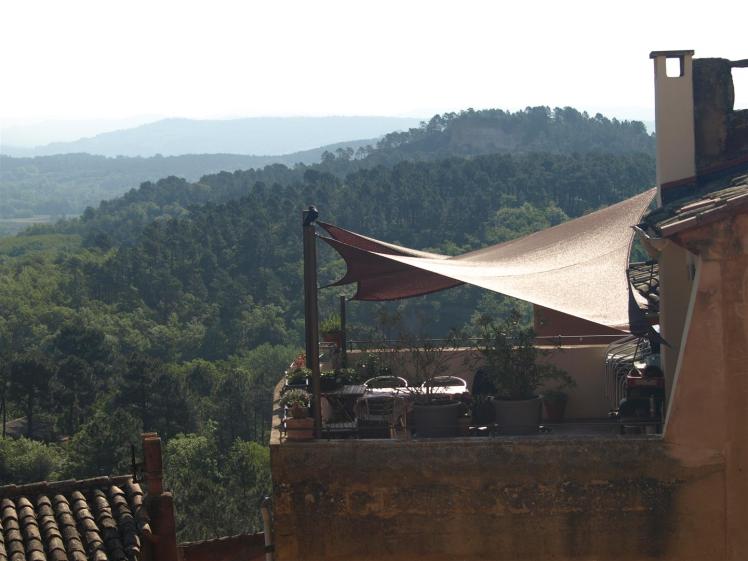
Martine had been working at a beauty salon over the winter months covering the owner who was on maternity leave and she starts work in the reception of a local campsite at the end of this month (April 2017) therefore we decided that it would be nice to take a little break and explore some of Provence which is really only a few hours south of here.
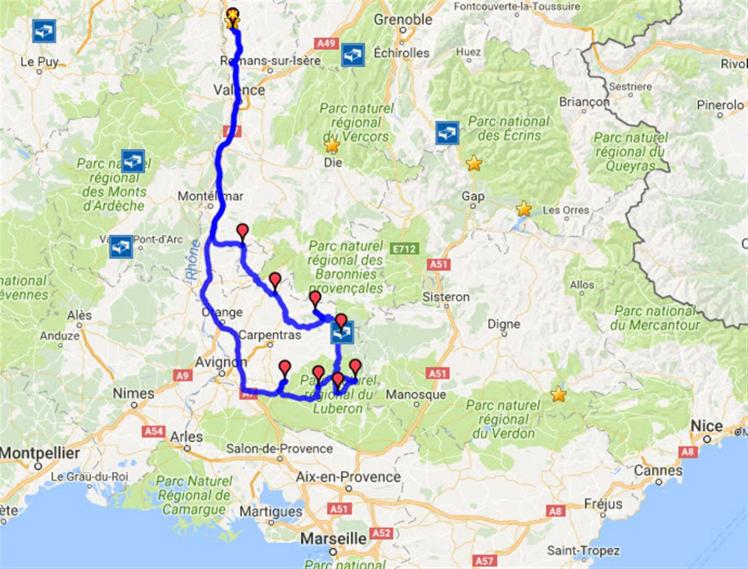
We opted to take the car rather than a motorcycle and booked into a very quant hotel in the centre of Apt which appears to be well placed to see most of the sites according to a tourist brochure that Martine acquired.
So, after leaving the dog with Martine’s parents, we set off early on Sunday 23rd taking the Autoroute south which is aptly named the Porte du Soleil. After about 90 minutes we arrived south of Avignon and onto local roads to head for our first destination which is called Fontaine-de-Vaucluse which is built around a spring in the valley which appears from out of nowhere as when you walk up the river towards towering cliffs you find that the water just appears. It doesn’t appear as a slow drip or even a stream but full on cascades which echo off the bare stone walls in this enchanted place. I would have liked to have written enchanted secret place but unfortunately it is a well-known beauty spot and being as Sunday during the Easter Holidays (in some departments), it was busy.
The spring itself is situated at the feet of a steep cliff 230 metres high, is the biggest spring in France, is the fifth largest in the world and has an annual flow of 630 million cubic metres – impressive!
We sat in the sun and had lunch followed by an ice-cream watching the water race by and admiring the views prior to exploring further into the village then up to the ruins of an old fort or stronghold which is perched precariously on the cliffs above – as I felt I was when I climbed up to get there!
All too soon we bade our farewell and got into our very hot car – thank goodness for air-conditioning – and set off for our next destination which was Roussillon. This village is perched on some cliffs (as most of the popular villages here seem to be) in the heart of one of the biggest ochre deposits in the world, Roussillon is famous for its magnificent red cliffs and ochre quarries. The red, yellow and brown shades of the earth form a striking contrast with the lush green pine trees. The vivid blue of the Provençal sky and the exceptional quality of light make this a magical site.
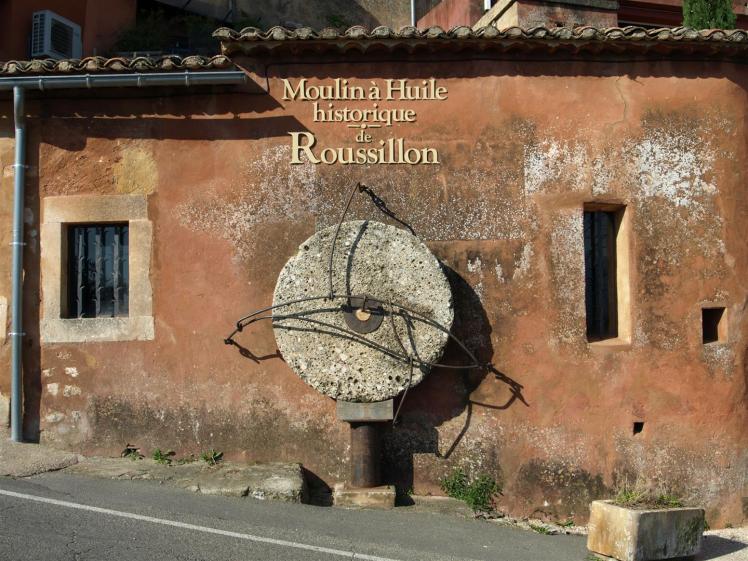
These villages were never designed for modern day transport and getting the car between some of the houses in the narrow streets or past other cars (hoping to not meet a camper van) is a task in itself! Parking is also not so easy especially on a Sunday but the locals are pretty well organised and have designated areas where you can park provided that you are lucky.
The village is beautiful and is considered one of the most impressive villages in France – Roussillon is one of the “must-sees” in the Luberon, and is well worth a detour. You could spend all day taking pictures and exploring the delightful streets. Art galleries, pottery shops, all local artists and products. There are quite a few cafés and restaurants but expect to pay dear – this is a popular place with a limited season.
We climbed the narrow streets past the beautiful church, up more narrow lanes – our eyes darting back and forth to take in the sights, colours and our noses taking in the beautiful heady scents from open doorways of shops selling their wares. I cannot describe how beautiful this village actually is but recommend that, if you get a chance, you pay a visit!
We soon had to leave to take in our next site on our mini tour as wedged between the Luberon mountains to the south and the Monts de Vaucluse to the north, the most spectacular of ochre sites is nicknamed “the Colorado Provençal”.
A small stream which flows from Gignac to Apt and which, with the rains, swells and sweeps along yellow waters rich in ochre, the Doa has over the centuries worked away at the earth’s layers, exposing the white limestone, green clays and banks of ochre sands, which here take on a tormented form rarely seen elsewhere.
Covering kilometres right in the heart of Provence, the old and crimson cliffs worthy of the Far West display canyon-like quarries, a succession of earth pillars and valleys with amazing contours.
After we parked the car we again set off on foot soon realising that this was not just a quick peek and go type place but in reality somewhere to spend the whole day with perhaps a picnic. There are marked walks which take you through the site but we were now running out of time to get to our hotel for the evening and could only just touch the surface of this amazing location. We did however get some feel for it and took quite a few stunning photographs – somewhere to visit again in the future.
Off we went with our trusty GPS leading us into Apt to our hotel which was quite near the centre. We were told that there was free parking just opposite which there was but (and isn’t there always a but?), because the 23rd was the day of the French election (part one) and the parking was opposite the town hall where the votes were cast – the parking was all taken or cordoned off! Off we went to find somewhere else which turned out to be quite simple and not far away.
A quaint room in a bijou hotel with a very pleasant young couple running it. They told us that there were only a few restaurants open that night as it was a Sunday and also that it would be better to reserve to ensure that we got a place (a likely story I can hear you murmur) – so we booked a table for 7.00pm in their restaurant and had a quick walk around the town along with a beer for the driver at a pavement cafe.
The hotel restaurant was a lovely surprise and busy – glad we booked as some people who arrived later had to be turned away!
A nice meal and another walk around the town before we turned in for the night – tired and happy with how our trip was going.
A reasonably early start the next morning saw us off in the direction of Mont Ventoux which has become legendary as the scene of one of the most gruelling climbs in the Tour de France bicycle race, which has ascended the mountain fifteen times since 1951.

The mountain achieved worldwide notoriety when it claimed the life of British cyclist Tom Simpson, who died here on 13 July 1967 from heat exhaustion caused by a combination of factors, including dehydration (caused by lack of fluid intake and diarrhea), amphetamines, and alcohol.
He began to wildly weave across the road before he fell down. He was delirious and asked spectators to put him back on the bike, which he rode to within a half mile of the summit before collapsing dead, still clipped into his pedals.
Amphetamines were found in his jersey and bloodstream.
Our route to the mountain was to take us up and down numerous cols (or mountain passes) on single track roads offering spectacular scenery with Mont Ventoux always in the distance. We passed village after village perched on cliff tops with churches or forts competing for dominance as the highest building of the outcrop. We drove up and down, round hairpin after hairpin, passing numerous cyclists all making their way to the mecca (well perhaps not all of them but there were a lot of cyclists). We fortunately only met one camper van which we got passed quite easily and saw very little traffic but by the time that we got to the road marked as the access to Mont Ventoux, we were both feeling slightly queasy and certainly tired from the driving therefore we agreed to skirt round it rather than climb yet another mountain and pass even more cyclists – perhaps next time.
A lunch stop in an Auberge proved a welcome break with the usual ‘menu’ coming in at €13 for a three course meal. We sat on the balcony in the sun admiring the mountain from the other side rather than looking down from a windswept summit.
After lunch and it was off to Vaison-la-Romaine which is famous for its rich Roman ruins, medieval town and cathedral. What makes Vaison-la-Romaine so unique is the possibility to see the antique, medieval and modern towns within the same environment, 2,000 years of history. A large share of collections originating from Vaison-la-Romaine are now dispersed among 25 museums worldwide, mostly in Europe and North America.
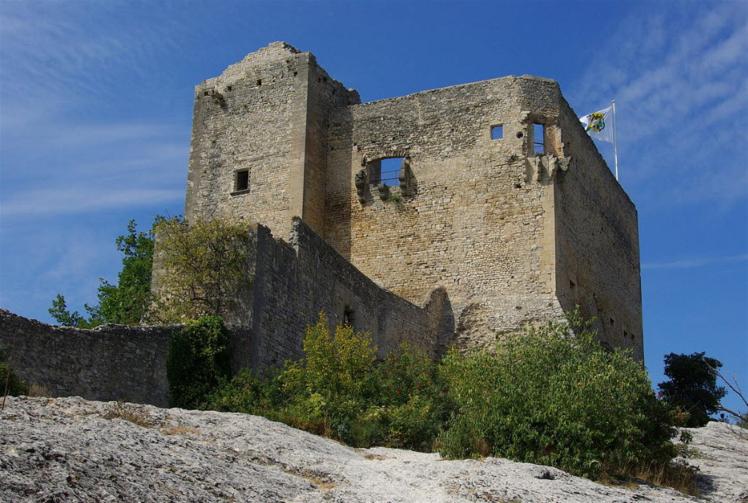
Vaison-la-Romaine is a city and therefore quite a contrast to the other stops we had made. We parked quite centrally having just passed the amphitheatre. I looked at a location board detailing the sights and how to get there and off we went over the Roman Bridge and up (and up) to the ancient citadel which forms part of the old town. Narrow streets, alleys and cobbles led us to a ruined fort on the summit which offered us nothing more than a viewpoint as there was no access into the building – I would assume that this was for safety reasons as although the walls were formidable and high. The view is certainly spectacular and you can see right across the valley over the new town (which dates from Roman times).
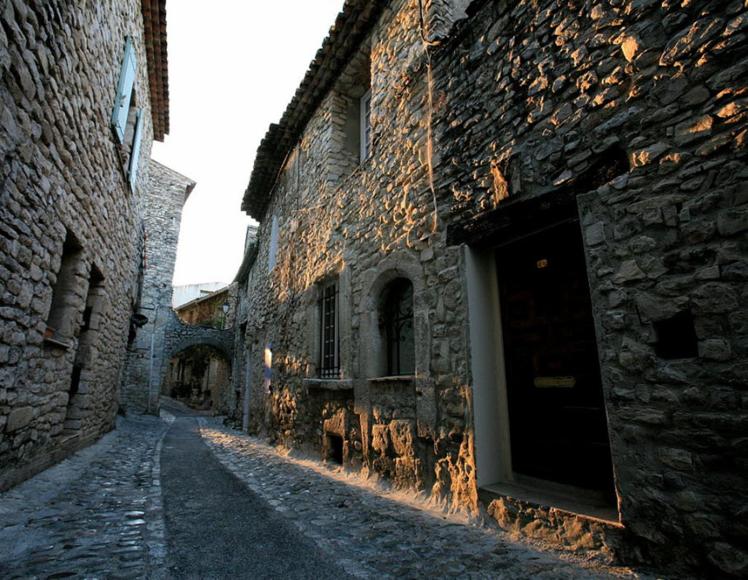
We then descended, crossed the Roman Bridge once again and started to explore the Roman remains which are all around the town.
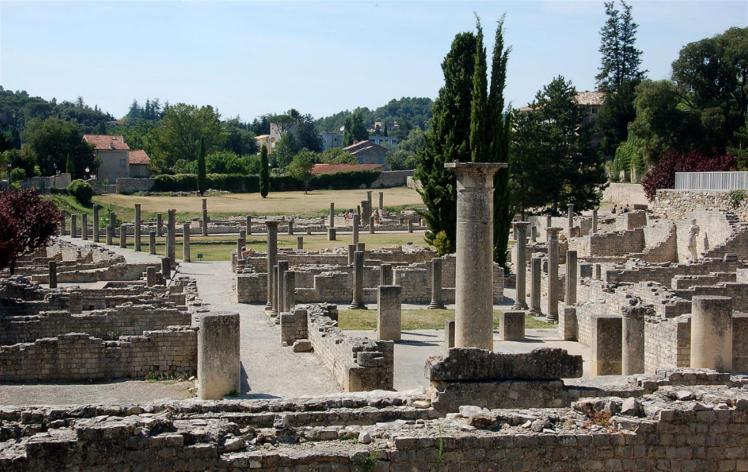
Eventually we decided to call our short trip south to a halt as we had a two hour drive home and had squeezed in enough so back to our trusty car and north to our home in Drome.
A lovely trip, fantastic weather and some absolutely stunning sights.
French Living


























